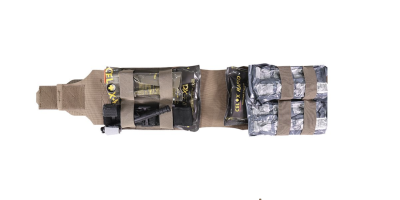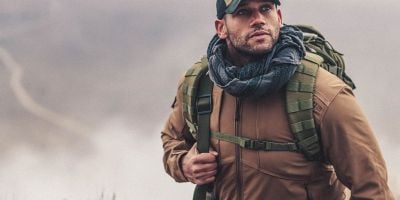-
Brands
-
Back
-
Warrior Laser Cut Range
-
Warrior Assault Systems
-
Nexus Body Armour / Helmets
-
Snugpak
-
5.11 Tactical
- AKU
-
Crye Precision
- Source Hydration
-
Clawgear Tactical Clothing
- Lowa
-
Camelbak
- View All »
-
Back
- Ballistic Helmets
- Soft Armour
- Complete Sets
-
Ballistic Plates
- View All
-
Back
-
Tactical Clothing
- Footwear
- Gloves
- Bags & Backpacks
- Tactical Plate Carriers
- Protective Gear
- View All
-
-
Products
-
Back
-
Tactical Equipment
-
Clothing & Footwear
-
Outdoor & Survival
-
Optical Equipment
-
Medical Equipment
-
Accessories
-
Police Products
-
Back
-
Plate Carriers
-
Back Panels
-
Magazine Pouches
-
Utility Pouches
-
Belts & Harnesses
-
Bags & Packs
-
Chest Rigs
-
Slings & Lanyards
-
Holsters & Leg Rigs
-
Protective Gear
-
Body Armour
- View All »
-
Back
- Boots & Footwear
- Jackets
-
Trousers, Shorts & Belts
-
T-Shirts, Polos & Shirts
- Hoodies
- Combat Shirts
- Caps, Hats and Headwear
- Tactical Vests
-
Gloves, Socks, Scarves, Balaclavas & Thermals
- View All »
-
Back
-
Police Tactical Equipment
-
Police Tactical Clothing
- View All »
-
Back
-
-
Back
-
-
-
Police Products
-
Back
-
Police Tactical Equipment
-
Police Tactical Clothing
- View All »
-
- Latest Items
- Items on Sale
-
Special Projects
-
Back
- Breaching
-
- Gift Vouchers

A Complete Guide to MOLLE: What It Is and How to Use It
Introduction to the MOLLE System
Imagine heading out for a long day hike, a training exercise, or a tactical mission. You need your gear organised, accessible, and secure but every scenario is different. This is where MOLLE (Modular Lightweight Load-carrying Equipment) shines. It allows you to customise your loadout exactly how you need it, moving pouches, tools, or first aid kits wherever they are most useful.
By the end of this guide, you’ll understand how the MOLLE system works, how to attach gear securely, and how to choose equipment that lasts. With years of experience supplying military-grade kit, UK Tactical is here to help you configure your gear efficiently and safely, whether it’s for everyday carry, hiking, or professional use.
What Is the MOLLE System?
Origins and Purpose
MOLLE stands for Modular Lightweight Load-carrying Equipment. Developed in the late 1990s for the US military, it replaced earlier systems such as ALICE. The system was designed to allow modularity, better ergonomics, and secure attachment points for a wide range of gear. Today, it’s widely used in military, police, security, and outdoor environments.
Components of MOLLEThe system revolves around PALS webbing and MOLLE straps. PALS (Pouch Attachment Ladder System) webbing is a grid of horizontal nylon straps sewn to gear. MOLLE straps on pouches weave through this webbing, locking attachments firmly in place. This design allows a highly customisable layout, letting users configure gear according to their needs.
How MOLLE Differs From Older SystemsUnlike older attachment systems such as ALICE clips or sewn-on pouches, MOLLE provides stronger, more stable connections and greater customisation. Its standardised webbing allows cross-brand compatibility, though careful weaving is required for optimal stability.
Core MOLLE Concepts
To get the best from your MOLLE setup, consider:Load distribution: Proper placement reduces fatigue and balances weight.
Webbing spacing: Standard 25 mm pitch ensures pouches fit securely.
Durability: Reinforced stitching and high-denier nylon improve longevity.
Compatibility: Most reputable brands follow standards, while cheaper alternatives may vary.
MOLLE Attachments: How They Work
MOLLE is used to attach a wide range of gear, including utility pouches, magazine pouches, admin panels (UK Tactical Admin Pouches), first aid kits, hydration sleeves, torch holders, and radio pouches (UK Tactical Radio Pouches).
Attachments are typically secured using the weaving method, threading straps through the PALS webbing. Some pouches use snaps, Velcro, or quick-release systems, while additional retention can be achieved with shock cords or zip ties.
For secure mounting, always weave through every row of webbing and keep attachments tight to prevent sagging. Heavy items benefit from additional stabilisers or cords.
MOLLE on Backpacks
Backpacks commonly feature MOLLE grids to expand storage, allow modularity, and let users customise their setup for different missions or activities.
Common backpack add-ons include side utility pouches (UK Tactical Utility Pouches), admin pockets, hydration sleeves, tool holders, and dump pouches. These allow users to layer gear efficiently without compromising access.
How to Attach MOLLE Gear
Follow these steps to secure a pouch to your backpack:
Align the pouch with the PALS grid.
Thread the MOLLE strap down through the backpack webbing.
Weave the strap back through the pouch webbing.
Repeat until fully secure.
Fasten snaps or Velcro and test for stability.
Example Setups
Day hikers often attach hydration sleeves, admin pockets, and side utility pouches, while urban operators may prioritise radio pouches, IFAKs, and tool organisers. EDC users might attach a small admin pouch, a multitool holster, and a compact organiser.
MOLLE Accessories and Complementary Gear
Accessories enhance MOLLE functionality. Common items include clips, belt adapters, chest rig panels, slat-wall mounts, stabiliser straps, and shock cords. Choose high-quality accessories with reinforced stitching and robust materials to ensure reliability.
Troubleshooting Common Issues
MOLLE can encounter problems such as loose attachments, misaligned webbing, overloading, or wear and tear. Regular inspection, proper weaving, and replacing worn straps will extend the life of your gear.
Advanced Techniques and Expert Tips
Experienced users can optimise MOLLE layouts by layering pouches, using low-profile stealth mounting, creating quick-release setups for rapid access, or custom-weaving for irregular surfaces.
Buying High-Quality MOLLE Gear
When choosing gear, check for:
High-denier nylon (500D–1000D)
Reinforced stitching
Correct webbing pitch and spacing
Reliable brand reputation
UK Tactical offers trusted MOLLE-compatible equipment including Magazine Pouches to ensure stability and compatibility. Avoid cheap knockoffs that may fail under load.
Real-World Use Cases
MOLLE is versatile:
Military: Ammo pouches, medical kits, radio, admin panels.
Hiking: Hydration, tool pouches, organiser pockets.
Airsoft: Magazine and utility pouches, radio holders.
Police/Security: Torches, cuffs, comms gear.
EDC: Multitools, torch pockets, compact organiser pouches.
Why MOLLE Matters
Mastering MOLLE isn’t just about attaching pouches, it’s about maximising efficiency, comfort, and readiness. A well-configured setup can save time, reduce fatigue, and ensure essential gear is always within reach. Remember these key points:
Weave your attachments properly to prevent sagging.
Invest in high-quality, branded gear that adheres to standard webbing dimensions.
Test your loadout in real conditions and adjust placement to match your needs.
Keep critical items accessible while maintaining balance and comfort.
With these principles, you can confidently configure your MOLLE-compatible backpacks, vests, and accessories. Explore the UK Tactical range for reliable gear designed for durability and professional use.
Frequently Asked Questions (FAQs)
Q: What does MOLLE stand for?
A: MOLLE stands for Modular Lightweight Load-carrying Equipment. It’s a system designed for modularity and adaptability in tactical and outdoor gear.
Q: How does MOLLE differ from ALICE or other older systems?
A: Unlike older attachment systems such as ALICE clips, MOLLE uses a standardised webbing grid and straps, providing stronger attachment, greater customisation, and better stability.
Q: Can I mix MOLLE gear from different brands?
A: Yes, as long as the gear adheres to the standard 25 mm webbing pitch. Cheaper or non-standard equipment may not fit correctly, so check specifications before purchasing.
Q: How do I prevent MOLLE pouches from sagging?
A: Proper weaving is key. Always feed straps through every available row of webbing and use additional retention methods like snaps, Velcro, or shock cords for heavier attachments.
Q: How do I maintain and extend the life of MOLLE gear?
A: Inspect stitching and webbing regularly, clean dirt and debris, repair or replace worn straps, and avoid overloading pouches beyond their recommended capacity.
Q: What type of gear is best for MOLLE attachment?
A: MOLLE can accommodate utility pouches, magazine pouches (UK Tactical Magazine Pouches), admin panels (UK Tactical Admin Pouches), hydration sleeves, first aid kits, radios (UK Tactical Radio Pouches), and other modular accessories.
A: MOLLE itself adds minimal weight; the added bulk comes from the pouches and gear you attach. Choosing the right combination of attachments can help balance weight and mobility.
By Dena
Related Posts

An IFAK, or Individual First Aid it, is a compact, portable kit designed to provide immediate medica...

Tactical boots are a crucial part of any professional or outdoor wardrobe, whether you’re in the mil...

5.11 is a trusted brand in the tactical and outdoor gear space, they are built on purpose-driven, du...
